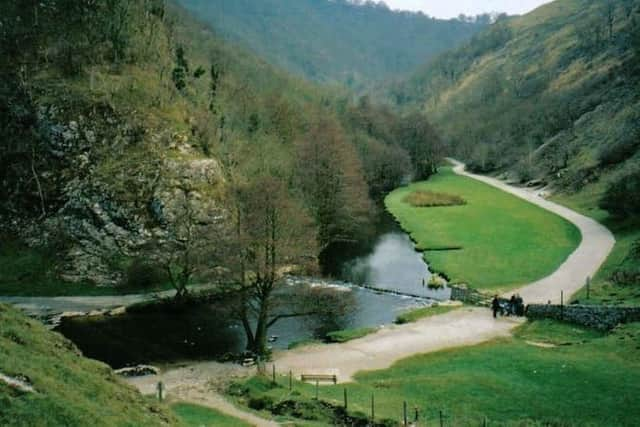£5m funding to save Peak District woodlands threatened by ash dieback
and live on Freeview channel 276
The initiative, led by Natural England, will combat the risk that ash dieback poses to the river valleys.
The LIFE in the Ravines project will protect 900 hectares of forest by planting lime and wych elm trees to fill the spaces that diseased ash trees leave behind.
Advertisement
Hide AdAdvertisement
Hide AdFive dales in the Derbyshire Dales National Nature Reserve, including Lathkill, are included in the project which will see drones used for the first time in the Peak District to help planting on the steep, rocky slopes.


Money for the restoration project has come from the EU, which has contributed £3.6million, with the remaining £1.4million to be funded by the project’s partners.
The partners include Derbyshire Wildlife Trust, National Trust and Chatsworth Estate. The project is also working with the Peak District National Park, Derbyshire Dales District Council, the Arkwright Society, the Forestry Commission and the Woodland Trust.
Ash dieback disease was first detected in the Peak District in 2015. The area’s ravine forests are dominated by ash and have high levels of infection, causing the loss of mature trees and the habitats of wildlife including rare beetles and birds such as redstarts.
Advertisement
Hide AdAdvertisement
Hide AdNatural England’s chief executive Marian Spain, said: “This innovative project will help restore the landscape and wildlife of this much-loved area of the country following the devastation of ash die back.”
The project will help ash trees that might be resilient to the disease as well as planting willow, aspen and other trees to attract a diversity of wildlife.
John Everitt, forestry manager at Chatsworth Estate, said: “We are very excited at Chatsworth about working alongside the other partners on this project to help restore some of the most important woodlands within the Peak District. We have observed and tracked the rapid decline of these internationally significant habitats over the past three years due to the onset of ash dieback. It will be fantastic to help diversify these woodlands and create resilient habitats that will hopefully stand the test of time, benefiting the environment for years to come.”
A message from the Editor:
Thank you for reading this story on our website. While I have your attention, I also have an important request to make of you.
Advertisement
Hide AdAdvertisement
Hide AdIn order for us to continue to provide high quality and trusted local news on this free-to-read site, I am asking you to also please purchase a copy of our newspaper.
Our journalists are highly trained and our content is independently regulated by IPSO to some of the most rigorous standards in the world. But being your eyes and ears comes at a price. So we need your support more than ever to buy our newspapers during this crisis.
With the coronavirus lockdown having a major impact on many of our local valued advertisers - and consequently the advertising that we receive - we are more reliant than ever on you helping us to provide you with news and information by buying a copy of our newspaper.
Thank you
Nancy Fielder, editor